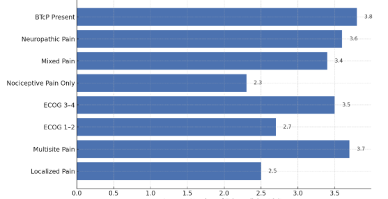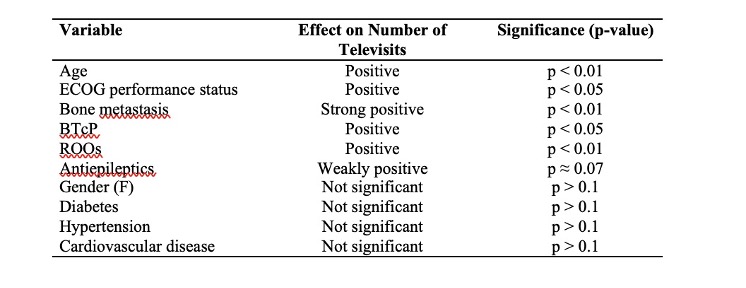Abstracts
22 September 2025
Vol. 2 No. s1 (2025): 48th National Conference of the Italian Association for the Study of Pain
BREAKTHROUGH CANCER PAIN, NEUROPATHIC PAIN FEATURES, AND OLDER AGE GREATLY INFLUENCE TELEMEDICINE-BASED FOLLOW-UP INTENSITY FOR CANCER PAIN MANAGEMENT
D. Esposito1, S. Romano1, M. Montedoro1, S. De Angelis1, G. Izzo1, V. Cerrone1, M.P. Bruno1, F. Monaco2, M. Cascella1 | 1Oncology, Ruggi Hospital, Salerno; 2ASL Napoli 1, Napoli
Publisher's note
All claims expressed in this article are solely those of the authors and do not necessarily represent those of their affiliated organizations, or those of the publisher, the editors and the reviewers. Any product that may be evaluated in this article or claim that may be made by its manufacturer is not guaranteed or endorsed by the publisher.
All claims expressed in this article are solely those of the authors and do not necessarily represent those of their affiliated organizations, or those of the publisher, the editors and the reviewers. Any product that may be evaluated in this article or claim that may be made by its manufacturer is not guaranteed or endorsed by the publisher.
29
Views
0
Downloads










